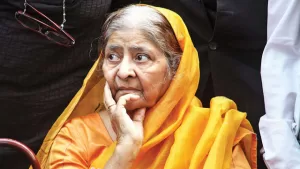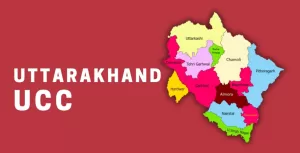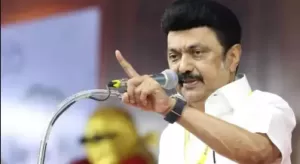It cannot be a chronological coincidence that Ivan Illich’s Deschooling Society (1970) and Michel Foucault’s Discipline and Punish (1975) appeared within a few years of each other. One was an attack on the idea of the school as a delivery system for knowledge, the other an attack on the prison as a delivery system for the protection of a society’s well-being. Both became extremely influential in shaping the intellectual orientation around concepts and institutions that are seen as the bedrocks of civilised society. Neither of these works was against the principles— of knowledge in Illich’s case, and of social well-being in Foucault’s case —but they brought out the institutional travesty of those principles. In questioning the institutional manifestations of the two ideas, Illich and Foucault were questioning the concepts that constitute modernity in order to show the underbelly of the conceptual complex on which various visions and ideas of the modern world are based. The politics of these interrogations pointed to how the diabolic sits together with the sanguine in what we think is the normal of the modern world, and how the State has constantly been overreaching its initial brief from the people who sanctioned the making of nations as nation-states.
The ‘censor’ and the ‘census’
One of the many instruments for increasing the reach of the State among the people is the census. Carried out by the State, apparently as an ideology-free statistical exercise with no more than functional significance, it is not what it looks like. If etymology is any help in analysing a concept, the census has a close etymological link with the term ‘censor.’ The Latin root ‘censere’, meaning “to assess, to value, to judge”, gradually became ‘censor’, meaning “to assess, to take a measure of someone” as long back as the 5th century CE. Its continued existence in Middle French and Old English had given it the additional sense of being a ‘moral judge’. The official appointed for passing moral judgements was called the ‘censor’ during the 17th century, the time when one’s church affiliation became a crucial factor in one’s social status in France as well as in England. The incessant wars between Catholic France and Protestant England increased the bureaucratic importance of the censor.
By the 19th century, and in the political context of Europe after Napoleon, the term split into two, one meaning ‘state official in charge of scrutiny and suppression of citizens’, the other meaning ‘a count of citizens and their assets’. One became the ‘censor’ as we recognise it in the ‘censor board’ and the other the ‘census’ as we have recognised it from the second half of the 19th century.
The Census of India in colonial India
When the Census of India was first carried out in the 1860s, the intention of the colonial rulers was not just to know how many people lived in the sub-continent that was under their control. It was also to know how they were divided into sub-groups, by religion, caste and convention. The 1860s were a complex decade, both for India and the government that had assumed authority after 1857. In Europe, the Franco-Prussian war had changed political equations, placing a greater responsibility on England in the ‘community of nations’ as the term was understood in Europe’s context where ‘Nationalism’ had acquired a greater legitimacy. In India, the colonial power in its search for land to lay rail-tracks and for turning them into industrial forests, was looking to list the communities that came in the way of accomplishing these objectives. The listing of tribes and nomadic communities acquired urgency.
In the 1830s and 1840s, William Henry Sleeman had compiled a list of ‘dangerous’ communities by devoting himself to recording every clash involving use of weapons. The myth of the ‘Thugee’ was made immensely popular by Sleeman’s books published in England. His list was used by Lord Mayo in enacting the first Criminal Tribes Act in October 1871. Mayo was murdered a few months later, in 1872. But he left behind a lasting instrument for use by the rulers of India. That was the Census of India. Carried out first in 1872, the decadal census acquired an unparalleled status as an instrument of use for deciding ‘state policy.’
The first comprehensive census was conducted in 1881. The features counted kept shifting, from dangerous animals to the number of villages, from death tolls in epidemics to the number of religious establishments. Counting, irrespective of what was counted, acquired official sanction and the counts made acquired a truth value, despite major gaps, erroneous computations, and a flawed methodology. The exercise of a census in a country like India was never easy. It was even less so during the pre-Independence period when literacy was extremely low and the level of trust between the subject people and the rulers even lower. The most important census from the perspective of demographic data held during the colonial rule was the 1931 census, which gathered invaluable information on castes and communities. The credit for the conceptualisation of the sociological enumeration goes partly to the capacity developed by the census office and partly to the development of Anthropology as a discipline, which by the 1920s had acquired an outstanding status due to breakthroughs made by European scholars in the subject.
The Census of India after Independence
After Independence, the task of conducting the decadal census was given to the Ministry of Home Affairs, and the Registrar General and the Census Commissioner. Thus we have the enactment of the Census of India Act in 1948, a testimony to how much the census exercise was seen as a necessary aid for governance.
The importance of the census in India increased after Independence, when the model of economic development chosen had the five-year-plans as the corner-stone. Data coming from the decadal counts was useful for planning. Despite the gaps and deficiencies in the census methods, the decade-by-decade comparison of data came in for developing a perspective on questions like population, literacy, agriculture, and language. One, therefore, has reason to thank the census for the data it gathered for enabling discussion and debates on development and social transformation.
In a country that had become a nation by bringing together several hundred states, and that had one of the largest populations in the world, such an ‘objective’ reference data was essential. In line with the emergence of other institutions being developed to support the idea of India as a democratic space, the norms, regulations, procedures and outcomes of the census were developed to make the Census of India an exercise empowering the people. For instance, the data on literacy rates in various states helped in setting achievable goals, which contributed over time to increasing those levels. The census data was also useful for formulating policies on people’s rights such as reservations and state benefits such as poverty reduction schemes. What is more important is that various activists’ organisations, trade unions, farmer groups and media critical of government performance too depended heavily on the census data for building their campaigns, activities and arguments. Thus for several decades, the census data contributed to significantly deepening welfare and democracy in India. Perhaps, the best use of the Census of India data was made by social science researchers whose arguments required statistical data to establish for authenticity.
However, the census in India always had the challenge of scale. The large population and the geographical spread invariably made the exercise a nightmare for the Registrar-General and Census Commissioner. The census had to depend on a very large number of school teachers as enumerators. They came from diverse linguistic backgrounds; to turn them into ‘trained enumerators’ in a few months remained a very complex challenge.
Slow marginalisation
Over the past decades, every census introduced new features, bringing in a set of questions on age, religion, household assets, marital status, gender distribution, and so on. Each of these deserved a census by itself. So the decadal census was, in fact, a mix of several enumerations all carried out at the same time and analysed for producing ‘finished data’ in a record short time. The compiling of the large volume of data, the analysis of this data, preparation for the next census, debates to be carried out for removing ambiguities in the questionnaire, all required time. With each passing census the nine-year gap between the two census exercises started looking too short. Therefore, some of the ministries such as of rural development, health, and education started developing their own methods for specific-purpose enumeration through the panchayats and taluka-level government offices. Such work was also being done by various commissions to arrive at authentic data.
The expansion of government functions and the network of government-created institutions led to the generation of larger amounts of data inputs in a short time, making the Census of India look inadequate for garnering the necessary statistical information. By the 1980s, the government’s dependence on the Registrar General’s office had therefore decreased significantly.
From the 1990s onwards, the Census of India had to face the indirect impact of the speedy developments in information technology. Often, private players such as companies manufacturing consumer goods and automobiles and the service provider consultancies had better and more recent data sets with them than the Census could ever put together in a short time span.
It is a rather tragic irony of Indian democracy that while there is a law on the Right to Information, the largest data gathering exercise in the country is now close to becoming obsolete. The public admission of the obsolescence of the Census of India comes with the BJP government deciding to put on hold the Census of India 2021 and perhaps not conduct the exercise at all. A number of other news reports have appeared on the government’s plans. Out has gone the baby with the bathwater.
Data fudging was not entirely unknown to earlier governments. For instance, in 1971, the Census decided ‘not to mention’ the names of languages spoken by less than 10,000 speakers, whereas in the 1961 census all names of languages returned by people as their ‘mother tongues’ were publicised. The marginal adjustment of literacy figures was not uncommon. However, the BJP government has far surpassed any other government in blocking data. In order to conceal the large gap between its propaganda and the situation on ground, it has resorted to tailoring of data. The government’s record on providing data for debate on the economy, welfare, social composition and gender disparities is unimaginably poor. During the COVID-19 pandemic, it fudged figures of the epidemic-related deaths when reliable estimates emerged from international agencies.
Despite not having any genuine excuse for dropping the 2021 census that was to be carried out in 2022, the government’s decision to let the country know that the exercise will not be carried out should have caused outrage. That it did not, indicates how the government has once again brought together the two meanings of the term ‘censor’, after a gap of several centuries when they lay separated. The BJP government’s promised march to the future by taking the country back to the past has been accomplished as far as the citizens’ right to have a database, however inadequate, that the census was making available.
(G.N. Devy is a cultural activist, based in Dharwad, Karnataka. Courtesy: The India Forum, an independent online journal-magazine that seeks to widen and deepen our conversations on the issues that concern people.)




